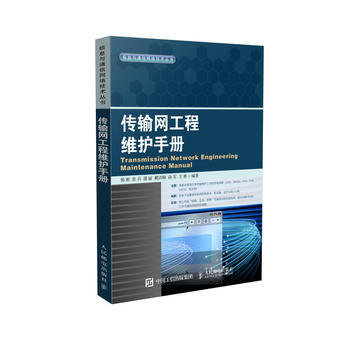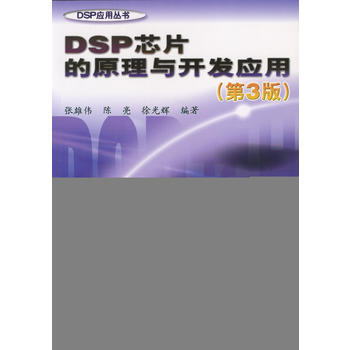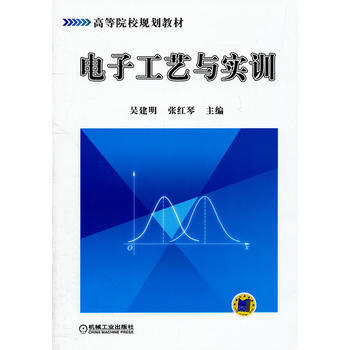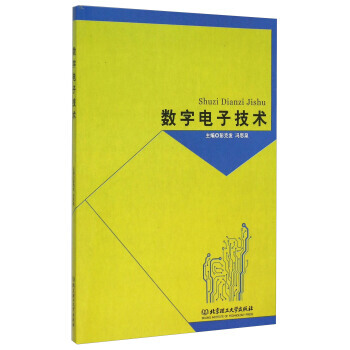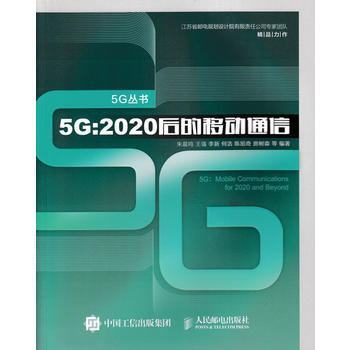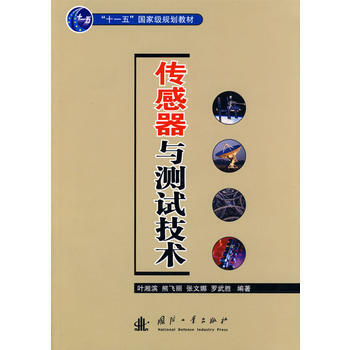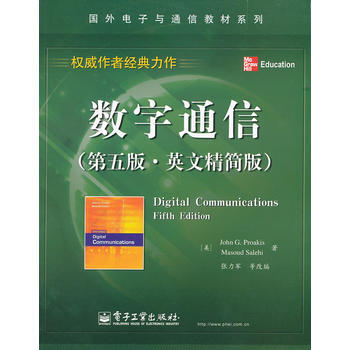

具体描述
基本信息
书名:数字通信(第五版 英文精简版)
定价:59.00元
作者:(美)普罗科斯,(美)萨利希,张力军 等改编
出版社:电子工业出版社
出版日期:2012-01-01
ISBN:9787121153259
字数:
页码:
版次:1
装帧:平装
开本:
商品重量:0.781kg
编辑推荐
内容提要
本书是在《数字通信(第五版)》的基础上,根据的实际教学情况进行精简和改编的。主要的精简原则为:保留信号传输理论内容,舍去信息传输理论内容,并以传统而经典的数字传输理论为主,无线通信为辅。改编的部分主要是根据实际教学的常用习惯来进行的。精简后的内容主要涵盖:确定与*信号分析;数字调制方法;AWGN信道的*接收机;载波和符号同步;通过带限信道的数字通信;自适应均衡;多信道和多载波系统;数字通信用扩频信号;衰落信道:信道特征与信号传输;多天线系统。
目录
Chapter 1Introduction
1.1 Elements of a Digital CommunicationSystem
1.2 Communication Channels and TheirCharacteristics
1.3 Mathematical Models for CommunicationChannels
1.4 A Historical Perspective in the Development of
Digitalommunications
Chapter 2 Deterministic and Random SignalAnalysis
2.1 Representation of Bandpass Signals andSystems
2.1–1 Representation of Bandpass Signals/ 2.1–2 Response of aBandpass System to a Bandpass Signal
2.2 Signal Space Representation ofWaveforms
2.2–1 Vector Space Concepts / 2.2–2 Signal Space Concepts / 2.2–3Orthogonal Expansions of Signals /2.2–4 Gram-SchmidtProcedure
2.3 Some Useful RandomVariables
2.4 RandomProcesses
2.4–1 Wide-Sense Stationary Random Processes /2.4–2Cyclostationary Random Processes
2.5 Series Expansion of RandomProcesses
2.5–1 Sampling Theorem for Band-Limited RandomProcesses /2.5–2 TheKarhunen-Lo`eve Expansion
2.6 Bandpass Stationary StochasticProcesses
Problems
Chapter 3 Digital ModulationSchemes
3.1 Representation of Digitally ModulatedSignals
3.2 Memoryless ModulationMethods
3.2–1 Pulse Amplitude Modulation (PAM) / 3.2–2 Phase Modulation /3.2–3 Quadrature Amplitude Modulation /3.2–4 MultidimensionalSignaling
3.3 Signaling Schemes withMemory
3.3–1 Continuous-Phase Frequency-Shift Keying(CPFSK) /
3.3–2 Continuous-Phase Modulation (CPM)
3.4 Power Spectrum of Digitally ModulatedSignals
3.4–1 Power Spectral Density of a Digitally ModulatedSignalwith
Memory / 3.4–2 Power Spectral Density of LinearlyModulated
Signals / 3.4–3 Power Spectral Density ofDigitally Modulated
Signals with Finite Memory / 3.4–4Power Spectral Density of
Modulation Schemes with a MarkovStructure / 3.4–5 Power
Spectral Densities of CPFSK and CPM Signals
Problems
Chapter 4 Optimum Receivers for AWGNChannels
4.1 Waveform and Vector ChannelModels
4.1–1 Optimal Detection for a General Vector Channel
4.2 Waveform and Vector AWGNChannels
4.2–1 Optimal Detection for the Vector AWGN Channel /4.2–2Implementation of the Optimal Receiver for AWGN Channels / 4.2–3 AUnion Bound on the Probability of Error of Maximum LikelihoodDetection
4.3 Optimal Detection and Error Probability for Band-Limited
Signaling
4.3–1 Optimal Detection and Error Probability for ASK or
PAM Signaling / 4.3–2 Optimal Detection and ErrorProbability
for PSK Signaling / 4.3–3 Optimal Detection and ErrorProbability
for QAM Signaling / 4.3–4 Demodulation and Detection
4.4 Optimal Detection and Error Probability forPower-Limited
Signaling
4.4–1 Optimal Detection and Error Probability for Orthogonal
Signaling / 4.4–2 Optimal Detection and Error Probabilityfor
Biorthogonal Signaling / 4.4–3 Optimal Detection and Error
Probability for Simplex Signaling
4.5 Optimal Detection in Presence of Uncertainty:Noncoherent
Detection
4.5–1 Noncoherent Detection of Carrier Modulated Signals /4.5–2Optimal Noncoherent Detection of FSK Modulated Signals / 4.5–3Error Probability of Orthogonal Signaling with NoncoherentDetection / 4.5–4 Probability of Error for Envelope Detection ofCorrelated Binary Signals /4.5–5 Differential PSK (DPSK)
4.6 A Comparison of Digital SignalingMethods
4.6–1 Bandwidth and Dimensionality
4.7 Lattices and Constellations Based onLattices
4.7–1 An Introduction to Lattices / 4.7–2 Signal Constellationsfrom Lattices
4.8 Detection of Signaling Schemes withMemory
4.8–1 The Maximum Likelihood Sequence Detector
4.9 Optimum Receiver for CPMSignals
4.9–1 Optimum Demodulation and Detection of CPM /4.9–2 Performanceof CPM Signals / 4.9–3 Suboptimum Demodulation and Detection of CPMSignals
Problems
Chapter 5 Carrier and SymbolSynchronization
5.1 Signal ParameterEstimation
5.1–1 The Likelihood Function / 5.1–2 Carrier Recovery and
Symbol Synchronization in Signal Demodulation
5.2 Carrier PhaseEstimation
5.2–1 Maximum-Likelihood Carrier Phase Estimation /5.2–2 ThePhase-Locked Loop / 5.2–3 Effect of AdditiveNoise on the PhaseEstimate / 5.2–4 Decision-Directed Loops / 5.2–5Non-Decision-Directed Loops
5.3 Symbol TimingEstimation
5.3–1 Maximum-Likelihood Timing Estimation /5.3–2Non-Decision-Directed Timing Estimation
5.4 Joint Estimation of Carrier Phase and SymbolTiming
5.5 Performance Characteristics of MLEstimators
Problems
Chapter 6 Digital Communication Through Band-LimitedChannels
6.1 Characterization of Band-LimitedChannels
6.2 Signal Design for Band-LimitedChannels
6.2–1 Design of Band-Limited Signals for No Intersymbol
Interference—The Nyquist Criterion / 6.2–2 Design of Band-LimitedSignals with Controlled ISI—Partial-Response Signals / 6.2–3 DataDetection for Controlled ISI /6.2–4 Signal Design for Channels withDistortion
6.3 Optimum Receiver for Channels with ISI andAWGN
6.3–1 Optimum Maximum-Likelihood Receiver /6.3–2 A Discrete-TimeModel for a Channel with ISI /6.3–3 Maximum-Likelihood SequenceEstimation (MLSE)
for the Discrete-Time White Noise Filter Model
6.4 LinearEqualization
6.4–1 Peak Distortion Criterion /6.4–2 Mean-Square-Error (MSE)Criterion /
6.4–3 Performance Characteristics of the MSE Equalizer /6.4–4Fractionally Spaced Equalizers /6.4–5 Baseband and Passband LinearEqualizers
6.5 Decision-FeedbackEqualization
6.5–1 Coefficient Optimization /6.5–2 Performance Characteristicsof DFE
6.6 Reduced Complexity MLDetectors
Problems
Chapter 7 AdaptiveEqualization
7.1 Adaptive LinearEqualizer
7.1–1 The Zero-Forcing Algorithm /7.1–2 The LMS Algorithm /7.1–3Convergence Properties of the LMS Algorithm /7.1–4 Excess MSE dueto Noisy Gradient Estimates /7.1–5 Accelerating the InitialConvergence Rate
in the LMS Algorithm / 7.1–6 Adaptive Fractionally SpacedEqualizer—The Tap Leakage Algorithm /7.1–7 An Adaptive ChannelEstimator for ML
Sequence Detection
7.2 Adaptive Decision-FeedbackEqualizer
7.3 Recursive Least-Squares Algorithms for AdaptiveEqualization
7.3–1 Recursive Least-Squares (Kalman) Algorithm /7.3–2 LinearPrediction and the Lattice Filter
Problems
Chapter 8 Multichannel and MulticarrierSystems
8.1 Multichannel Digital Communications in AWGNChannels
8.1–1 Binary Signals / 8.1–2 M-ary Orthogonal Signals
8.2 MulticarrierCommunications
8.2–1 Single-Carrier Versus Multicarrier Modulation /8.2–2Capacity of a Nonideal Linear Filter Channel /8.2–3 OrthogonalFrequency Division Multiplexing (OFDM) /8.2–4 Modulation andDemodulation in an OFDM System /
8.2–5 An FFT Algorithm Implementation of an OFDM System /8.2–6Spectral Characteristics of Multicarrier Signals /8.2–7 Bit andPower Allocation in Multicarrier Modulation /8.2–8 Peak-to-AverageRatio in Multicarrier Modulation /8.2–9 Channel CodingConsiderations in Multicarrier Modulation
Problems
Chapter 9 Spread Spectrum Signals for DigitalCommunications
9.1 Model of Spread Spectrum Digital CommunicationSystem
9.2 Direct Sequence Spread SpectrumSignals
9.2–1 Error Rate Performance of the Decoder /9.2–2 SomeApplications of DS Spread Spectrum Signals /9.2–3 Effect of PulsedInterference on DS Spread Spectrum Systems / 9.2–4 Excision ofNarrowband Interference in DS Spread Spectrum Systems / 9.2–5Generation of PN Sequences
9.3 Frequency-Hopped Spread SpectrumSignals
9.3–1 Performance of FH Spread Spectrum Signals in an
AWGN Channel / 9.3–2 Performance of FH Spread Spectrum
Signals in Partial-Band Interference / 9.3–3 A CDMA System
Based on FH Spread Spectrum Signals
9.4 Other Types of Spread SpectrumSignals
Problems
Chapter 10 Fading Channels : Characterization and
Signaling
10.1 Characterization of Fading MultipathChannels
10.1–1 Channel Correlation Functions and Power Spectra /
10.1–2 Statistical Models for Fading Channels
10.2 The Effect of Signal Characteristics on the Choice of aChannelModel
10.3 Frequency-Nonselective, Slowly FadingChannel
10.4 Diversity Techniques for Fading MultipathChannels
10.4–1 Binary Signals / 10.4–2 Multiphase Signals /10.4–3 M-aryOrthogonal Signals
10.5 Signaling over a Frequency-Selective, Slowly FadingChannel:
The RAKEemodulator
10.5–1 A Tapped-Delay-Line Channel Model / 10.5–2 The RAKEDemodulator / 10.5–3 Performance of RAKE Demodulator / 10.5–4Receiver Structures for Channels with IntersymbolInterference
10.6 Multicarrier Modulation(OFDM)
10.6–1 Performance Degradation of an OFDM System due to DopplerSpreading / 10.6–2 Suppression of ICI in OFDM Systems
Problems
Chapter 11 Multiple-AntennaSystems
11.1 Channel Models for Multiple-AntennaSystems
11.1–1 Signal Transmission Through a Slow FadingFrequency-Nonselective MIMO Channel / 11.1–2 Detection of DataSymbols in a MIMO System / 11.1–3 Signal
Transmission Through a Slow Fading Frequency-Selective MIMOChannel
11.2 Spread Spectrum Signals and MulticodeTransmission
11.2–1 Orthogonal Spreading Sequences /11.2–2 Multiplexing GainVersus Diversity Gain /11.2–3 Multicode MIMO Systems
Problems
作者介绍
文摘
序言
用户评价
我一直觉得,一本真正的好书,不仅仅是文字的堆砌,更是一种思维的启发,一种观点的碰撞。这本书的作者(我看到作者名字是普罗科斯),一看就是在这个领域深耕多年的专家。我非常期待能从他的著作中,学习到他独特的视角和深刻的见解。我希望这本书能够不仅仅是知识的传授,更能引发我更深层次的思考,让我能够跳出书本的框架,形成自己对数字通信的理解。我希望它能够提出一些新颖的问题,或者提供一些解决问题的不同思路,让我能够获得一些“顿悟”的时刻。我更希望它能激励我,去探索更多未知的领域,而不是仅仅满足于现有的知识。这是一种对智慧的渴求,也是我对一本优秀学术著作的最高期望。
评分这本书的包装和印刷质量真是无可挑剔,厚实的书脊,纸张也很有分量,拿在手里沉甸甸的,感觉就是一本值得珍藏的好书。封面设计也相当有品味,简洁大气,一看就不是那种流水线生产的快餐读物。翻开扉页,那股淡淡的油墨香扑鼻而来,瞬间勾起了我对知识的渴望。目录的排版也很清晰,条理分明,让我一眼就能找到自己感兴趣的部分。甚至连章节之间的过渡句,都感觉经过了精心打磨,阅读体验非常顺畅。拿到手里的时候,我还在犹豫是否要立刻开始阅读,因为我太想先欣赏一下它本身的美感了。书的尺寸也恰到好处,既不会显得过于笨重,又足以容纳丰富的内涵。我甚至想把这本书放在书架的最显眼的位置,作为一件艺术品来展示。它的整体质感,远超我的预期,让我对接下来的阅读充满了期待,我相信这一定是一次不同寻常的阅读旅程。
评分作为一名在这个行业摸爬滚打多年的工程师,我见过太多“理论脱离实际”的书籍。很多书写得高大上,一套套的公式,但真正用到实际工作中,却发现无从下手。我希望这本书能够在这方面有所突破。我期待它能在讲解理论的同时,穿插一些经典的案例分析,或者提供一些实际工程中的应用场景。我希望它能够让我看到,那些抽象的理论是如何转化为实际产品的,又是如何在现实世界中发挥作用的。我更希望它能够给我一些解决实际问题的灵感,或者提供一些值得借鉴的工程实践。如果这本书能够帮助我提升解决实际问题的能力,那么它就不仅仅是一本教科书,更是一份宝贵的职业财富。
评分说实话,我是一个对排版和版式有一定要求的人。有些书,即使内容再好,如果排版混乱,字体大小不统一,或者图片模糊不清,都会极大地影响我的阅读兴趣。而这本书,从我看到的第一眼,就给了我一种赏心悦目的感觉。字体大小适中,行间距舒适,章节标题醒目,公式和图表的排版也非常规范,看起来很专业。甚至连页眉页脚的设计,都体现了出版方的用心。我喜欢那种阅读起来毫不费力的书籍,眼睛不会因为长时间盯着模糊或拥挤的文字而疲劳。这本书在这一点上做得非常出色,让我能够更专注于内容的理解,而不是被糟糕的版式所干扰。这种细节上的打磨,足以证明出版方的专业素养和对读者的尊重,也让我对这本书的内容质量有了更高的期待。
评分我最近在学习一些关于信号处理的理论,市面上相关的书籍琳琅满目,但很多都过于理论化,或者讲解不够深入,让人难以把握核心。直到我偶然间看到这本书的推荐,它强调了“英文精简版”的特点,这让我眼前一亮。我一直觉得,原版英文的表达方式往往更直接、更准确,而且精简版意味着去掉了那些可能不那么核心、但又会增加篇幅的内容,直击要点。这对于我这种时间宝贵,希望快速掌握关键知识的学习者来说,简直是福音。而且,能够获得国外顶尖学者的思想精华,不用费力去阅读大量的英文文献,又能保证内容的权威性和前沿性,这让我对这本书充满了信心。我希望它能够像一位经验丰富的导师,用清晰的语言,引导我穿越复杂的数字通信领域,揭示其中的奥秘。
相关图书
本站所有内容均为互联网搜索引擎提供的公开搜索信息,本站不存储任何数据与内容,任何内容与数据均与本站无关,如有需要请联系相关搜索引擎包括但不限于百度,google,bing,sogou 等
© 2026 book.idnshop.cc All Rights Reserved. 静思书屋 版权所有

![电子元器件百宝箱 第2卷 [美] Charles Platt,赵正 pdf epub mobi 电子书 下载](https://pic.tinynews.org/29353844411/5b24c997N1a13cb0e.jpg)




![电子技术完全手册(第5版) [美]Stan Gibilisco pdf epub mobi 电子书 下载](https://pic.tinynews.org/29354137975/5b24cb38N6225e066.jpg)
